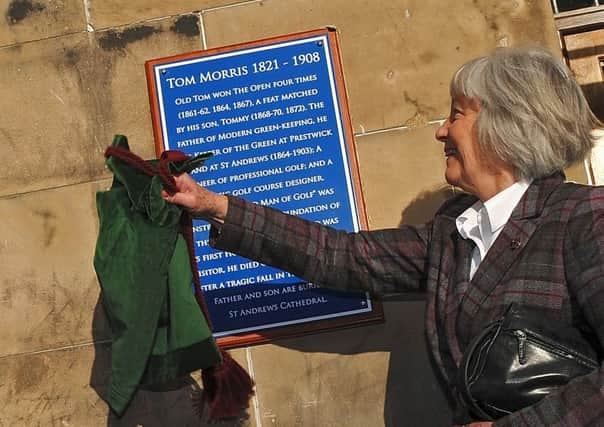New history plaques planned for St Andrews


From the 15th century through to more recent times, the plaques tell the story of the people and the events that have shaped the town’s history, even noting the West Sands’ use as a location for Chariots of Fife.
In recent years plaques have been unveiled marking the St Andrews meridian line, and Tom Morris.
Advertisement
Hide AdAdvertisement
Hide AdNow planning permission is being sought for plaques at Deans Court and The Roundel, where two coats of arms, incised into the stone are either eroding or hidden by surrounding foliage.
It’s all at the behest of local resident Colin McAllister, and is the culmination of eight years’ work for him.
Deans Court will be the site of a plaque marking the site of the coat of arms of Sir George Douglas of Lochleven, who owned and ‘repaired’ the property around 1585.
Douglas was instrumental in the escape of Mary Queen of Scots from Loch Leven Castle in May 1568, taking the Queen to safety at West Niddry Castle, south of the Forth, later accompanying her to Dunfermline Abbey and thence to England after the Battle of Langside.
Advertisement
Hide AdAdvertisement
Hide AdMary arranged for Douglas to escape to France, where he stayed until 1574, when he returned secretly to Scotland.
At The Roundel a plaque will explain the arms that appear there.
They belong to James Haldenstane, something of a 15th century prodigy.
Believed to have been born in 1390, Haldenstane was an Augustinian canon by 1408, and just eight years later had become a Doctor of Theology.
Advertisement
Hide AdAdvertisement
Hide AdHe was the university’s first professor and dean of theology, and in 1417 was appointed Prior of St Andrews, the second most important job in ecclesiastical Scotland, holding the post until his death in 1443.
Mr McAllister has been behind many of the plaques around the town already both as an individual and for a period as convener of St Andrews’ Preservation Trust’s plaques committee.
No longer involved with the committee, he’s erecting these two plaques himself, committed to ensuring that the town’s history is not lost.
Delighted that the bid for planning permission is now going ahead, he’s already thinking to the future .
s“I must organise an event to mark them going in place,” he said, expecting that to happen next spring.